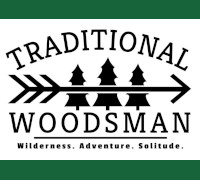The Whitetail Depression
Deer hunters have never had it so good. But a number of leading indicators suggest whitetail numbers are heading toward a game-changing decline. Is it a correction? Or a crash?
Article by Andrew McKean
http://www.outdoorlife.com/articles/hunting/2011/08/whitetail-recession Dr. Grant Woods likes to assess the health of Deer Country from three different altitudes: what he calls the “satellite view,” a broad look at macroscopic trends across entire regions; the “helicopter view” that can evaluate conditions on a specific property; and the view from the ground—his “shoelace view”—where he can count animals and inventory forage.
Woods is a consulting wildlife biologist whose land-management work takes him around the nation. And any way he looks at it, from almost any region or perspective, he says America’s deer herd is in trouble.
“I think we’re nearing a crisis mode,” says Dr. Woods, who isn’t given to hyperbole either by profession or personality. “The best-case scenario is that deer populations drop 10 to 25 percent over the next couple years.”
He’s not alone. The director of a Southeastern state game-and-fish agency, who didn’t want us to use his name, notes that biologists in his state are seeing what he calls “pockets of poverty,” whole townships with few deer. A couple of counties away, though, whitetails are above long-term populations.
“I can’t draw conclusions about what’s driving either declines or increases,” he says. “But I’ve personally been telling hunters for 20 years that you can’t kill enough does. Now I’m starting to say maybe it’s time to put on the brakes.”
That downbeat assessment seems inconsistent with a generation of euphoric news about America’s favorite game animal—after all, we’re used to repeating the mantra that the nation’s greatest conservation accomplishment was the restoration of whitetails from the brink of extinction to a current population of more than 20 million. Managed hunting has increased deer populations, expanded hunting opportunity and given rise to an American original: the hunter/conservationist who pays for the opportunity to manage a public resource and who cherishes the very quarry he intends to kill.
But Woods claims a troubling combination of habitat loss, escalating numbers of predators, underfunded wildlife agencies and even hunters’ behavior and expectations are stressing America’s deer herd. And instead of gently declining to a sustainable level, Woods and others are suggesting whitetail populations are poised to experience a steep drop, somewhere between a significant correction and a catastrophic crash.
Before you go out and sell your ground blind and grunt tube, understand that deer are not in decline everywhere, and where they are hurting, some of the maladies are reversible.
But if the slide is as widespread and as steep as Woods predicts, then we could be headed toward a crisis that has the potential to reshape the culture and economy of conservation in America.
“If whitetail populations are off more than 10 percent for a couple of years, then I expect up to 50 percent of our hunters will stop hunting,” predicts Woods. “Sometime over the last generation, hunters became fickle. They’ll participate when opportunity is good, but give them a couple of poor years (of hunting) and they’ll stop buying licenses and gear. They’ll take up golfing instead.”
That sort of talk sends shivers through the hunting community. Whitetails drive the industry, not only in terms of numbers of participants (more than 11 million), but also with the hunting licenses that fund state wildlife agencies (nearly $600 million annually) and the gear we buy ($12.4 billion).
“The whitetail deer is the backbone of the hunting industry in America,” says John L. Morris, founder and owner of Bass Pro Shops. “And not just in the fall, prior to hunting season. In the last decade we’ve seen deer hunters become year-round customers as they develop land and intensively manage their property.”
AGING FORESTS
None of us like reductions in hunting opportunity, but isn’t it true that whitetail numbers have been at historic highs for over a decade? Like the inflated housing market or the “irrational exuberance” of the stock market, maybe we’ve been living in a whitetail bubble that was bound to burst.
Not so fast, says Kip Adams of the Quality Deer Management Association.
“The fact that we have fewer deer is by design,” he says. “We have been way over (population) objective in many places, and a number of states wanted to drop herd numbers by increasing doe harvest. But it’s also true that predators—wolves, coyotes, black bears, mountain lions, bobcats, even raccoons—caused some of these drops to be sharper than intended the last couple years.”
But more worrisome than predators is the maturation of America’s forests, says Adams.
“If I’m scared about a single trend, it’s how little game our forests can support,” he says. “A young hardwood forest can easily produce 1,000 pounds of available food per acre. A mature forest produces 50 to 100 pounds. We have the same number of acres covered in trees now that we did 50 years ago, but it can’t come close to carrying the same number of deer.”
And Adams says the discrepancy in quality between habitats on private versus public land is widening at an alarming pace.
“Historically, the private and public habitat was approximately the same. But today, the average private land is far higher in quality than the adjacent public land. You have private landowners actively managing their land for wildlife. But on public land, you have a forest that hasn’t been logged and habitat that hasn’t been managed. Most of our deer hunters hunt public land, and they’re starting to notice that quality gap. It’s going to get even wider.”
A GATHERING STORM?
Distilled to its essence, what Woods, Adams and other biologists are really seeking is more active deer management. Aggressive predator control. Better disease monitoring. More proactive habitat and population assessment.
Will those things counter what appears to be a slow decline in whitetail numbers?
“Probably not,” admits Woods, who thinks predator populations are poised to explode from Maine to Florida. “I think the only thing that’s going to control coyotes is that their densities will get so great that they get a devastating mange or distemper outbreak that will go through their populations like wildfire.”
Readily adaptable, whitetails may also alter their behavior to avoid predation. They may respond as wildebeests do in lion country, by synchronous breeding, an evolutionary strategy that swamps predators by ensuring that all the fawns are born at the same time. Or deer may seek habitats where predators are less effective.
Even with these adjustments, Woods thinks rough days are ahead for American whitetail hunters.
“We will never lose our deer herd,” he says. “They’re too adaptable. Whitetails are generalists able to make a living in a variety of places. But I do think we should be prepared to return to the days when you might have to drive 100 miles to find a place to hunt, or consider it a good day when you saw one or two deer, or even just a track.”



























